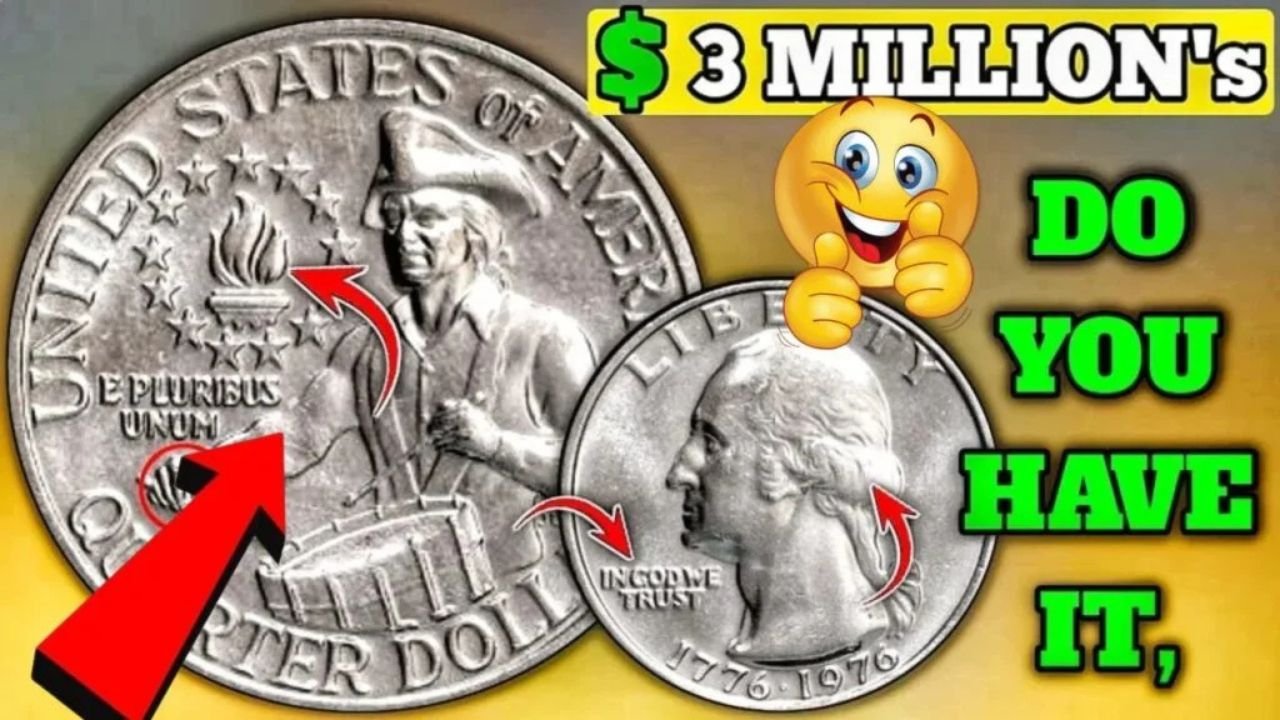Coin collectors across the United States are always on the lookout for rare treasures hidden in plain sight—and one of the most famous examples is the 1976 Bicentennial Quarter. While millions of these quarters were minted to celebrate America’s 200th birthday, a few rare varieties are so unique that they can be worth up to $3 million today. Here’s how to identify one of these valuable coins and what makes it so special.
A Brief History of the 1976 Bicentennial Quarter
The 1976 Bicentennial Quarter was issued to commemorate the 200th anniversary of American independence. Unlike traditional quarters that feature the eagle reverse, the Bicentennial version proudly displays a special design: a Colonial drummer boy, created by artist Jack L. Ahr, along with a torch surrounded by thirteen stars. These coins were minted in 1975 and 1976, but all carry the dual date “1776–1976.” They came in both copper-nickel and 40% silver versions, with the latter being released primarily in collector sets.
What Makes Some Bicentennial Quarters So Valuable?
Most 1976 quarters are worth only their face value—25 cents. However, certain rare varieties, minting errors, and special editions can bring huge value to collectors. Here are the key reasons why some reach prices as high as $3 million:
-
Silver Composition Error Coins
A small number of Bicentennial quarters were mistakenly struck on 40% silver planchets intended for proof or collector sets. These error coins are extremely rare and can fetch hundreds of thousands—or even millions—depending on condition. -
Double Die Errors
Look for doubling in the lettering, especially around the words “LIBERTY,” “IN GOD WE TRUST,” or the drummer’s features. Such double die errors are very scarce and highly collectible. -
Off-Center Strikes
If the design appears off-center or partially missing, you may have a valuable error coin. The more dramatic the error, the higher the value. -
Proof and Uncirculated Silver Sets
Special 40% silver Bicentennial quarters produced at the San Francisco Mint (marked with “S”) were sold to collectors in proof or uncirculated sets. These are worth far more than regular circulation coins, especially in pristine condition. -
High-Grade Certified Coins
Coins graded MS-68 or higher by the Professional Coin Grading Service (PCGS) or Numismatic Guaranty Company (NGC) can command premium prices—even well into the six-figure range.
How to Identify a Rare Bicentennial Quarter
To determine if your coin might be the valuable kind, follow these steps:
-
Check the Mint Mark:
Look below Washington’s portrait.
- “S” = San Francisco Mint (often silver)
- “D” = Denver Mint
- No mark = Philadelphia Mint
-
Inspect the Edge:
A silver edge (no visible copper color) may indicate a 40% silver planchet. -
Use a Scale:
A silver Bicentennial quarter weighs about 5.75 grams, while the regular copper-nickel version weighs 5.67 grams. -
Magnify the Details:
Look closely for doubling, misprints, or design anomalies on both sides of the coin. -
Get It Appraised:
If your quarter looks unusual or is in exceptional condition, have it graded by a professional numismatic service.
Current Market and Record Prices
High-grade or error Bicentennial quarters have sold for astonishing sums at auction. In one notable case, a silver-struck error version was valued close to $3 million due to its rarity, pristine condition, and historical significance.
Collectors and investors continue to pay top dollar for these coins—proof that sometimes the smallest treasures can hold the greatest value.
Final Thoughts
Finding a rare 1976 Bicentennial Quarter worth millions might feel like winning the lottery, but it’s not impossible. With careful inspection, attention to detail, and a bit of luck, you could uncover one of these valuable pieces of American history hiding in your coin jar.
So next time you receive a quarter in change—look closely. You might just be holding a $3 million piece of history in your hand.
FAQ The Rare 1976 Bicentennial Quarter Worth UP To $3 Million
Q1: Are all 1976 quarters valuable?
No. Only certain rare errors or silver strikes are worth significant money; most are worth 25 cents.
Q2: How can I tell if my quarter is silver?
Check the coin’s edge. A solid silver edge (no copper stripe) often indicates a silver version.
Q3: Where should I get my coin checked?
Use professional grading services like PCGS or NGC for authentication and valuation.
Q4: Can circulated coins still be valuable?
Yes, if they have rare mint errors or unusual features.
Q5: What’s the highest recorded price for one?
Exceptional silver-strike or error Bicentennial quarters have reached up to $3 million in value.






